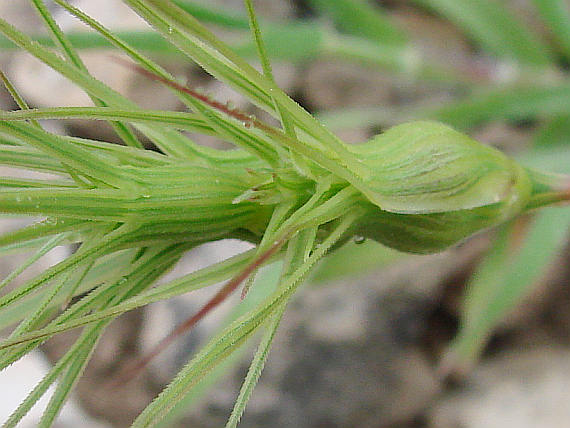 Khaled Mguis, Asma Mahjoub, Mejda Abassi, Ali Albouchi, Zeineb Ouerghi, Ben Brahim Nadia, Zoubeir Béjaoui
Khaled Mguis, Asma Mahjoub, Mejda Abassi, Ali Albouchi, Zeineb Ouerghi, Ben Brahim Nadia, Zoubeir Béjaoui
Unité de physiologie et biochimie de la tolérance aux sels des plantes, Département de biologie FST, Université de Tunis El Manar 2092 Tunis, Tunisia
Laboratoire d’écologie Forestière, INERGREF, Rue Hedi Karray, 2080 Ariana, Tunisia
Laboratoire des Sciences agronomiques, INRAT, Rue Hedi Karray, 2080 Ariana, Tunisia
First and second authors contributed equally in this work.
Key words: Aegilops geniculata. Morphology. Diversity. RAPD.
Abstract
Aegilops geniculata Roth is an annual grass relative to cultivated wheats and is widely distributed in North Africa. In order to understand the diversity of this species, 13 populations collected in different bioclimatic areas in north and central Tunisian were analyzed using morphological and molecular characters. Principal component analyses (PCA) based on the agro-morphological characters allowed the separation of populations in five mainly bioclimatic groups characterized by different morphological patterns. Populations originated from humid coastal areas were characterized by good vegetative development, vigorous spikes and caryopses. Samples collected from mean altitude with sub-humid climate had late germination and a large growing cycle a high biomass production and weak caryopses.  Populations collected from intermediate and high mountains with sub-humid and semi-arid conditions presented good fertility and high yield-related. Individuals with early germination, weak vegetative development and high caryopses yield characteristics of the coastal areas and plains in sub-humid and the upper semi-arid climate. Populations originated from steppic highlands in upper arid conditions and mean and high altitudes mountains with upper semi-arid were characterized by low morphological development, weak fertility reduction of yield-related and shortening of growing cycle. Individuals were distinguished successively by Phenological, morphological and Yield-related traits. RAPD analysis based on the phenotypic variability and genetic distances revealed a significant variation within and between populations associated with bioclimatic conditions, in particular winter temperature. Genetic diversity was higher in populations growing under warm bioclimates than in those from cold bioclimates.
Populations collected from intermediate and high mountains with sub-humid and semi-arid conditions presented good fertility and high yield-related. Individuals with early germination, weak vegetative development and high caryopses yield characteristics of the coastal areas and plains in sub-humid and the upper semi-arid climate. Populations originated from steppic highlands in upper arid conditions and mean and high altitudes mountains with upper semi-arid were characterized by low morphological development, weak fertility reduction of yield-related and shortening of growing cycle. Individuals were distinguished successively by Phenological, morphological and Yield-related traits. RAPD analysis based on the phenotypic variability and genetic distances revealed a significant variation within and between populations associated with bioclimatic conditions, in particular winter temperature. Genetic diversity was higher in populations growing under warm bioclimates than in those from cold bioclimates.
Get the original articles in Source: Volume 6, Number 2, February 2015 – IJAAR
Journal Name: International Journal of Agronomy and Agricultural Research (IJAAR)
Published By: International Network for Natural Sciences
Related Post: Chemodynamics of cypermethrin in eggplant agroecosystem in Bangladesh – IJAAR
